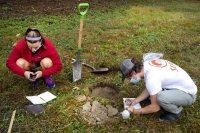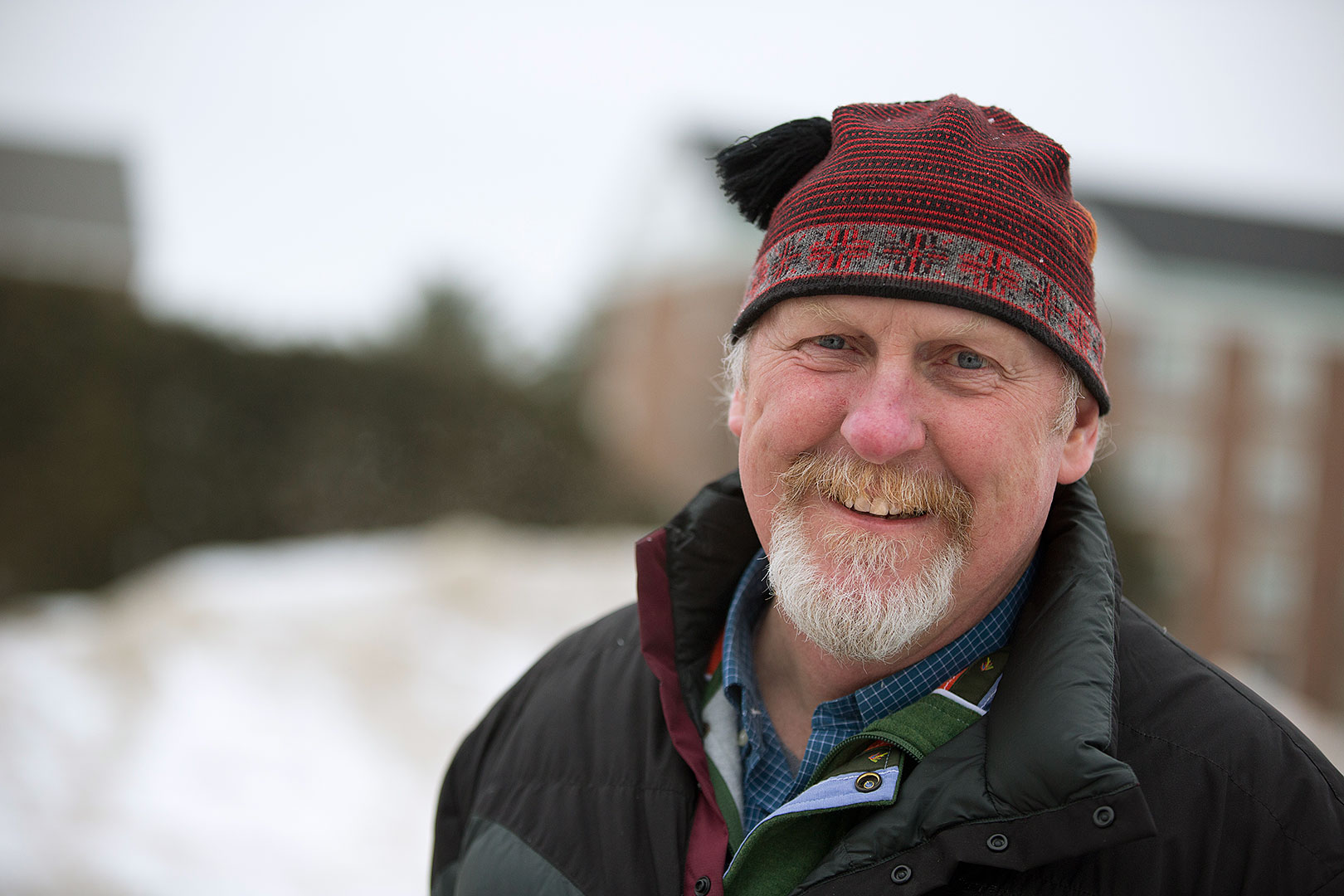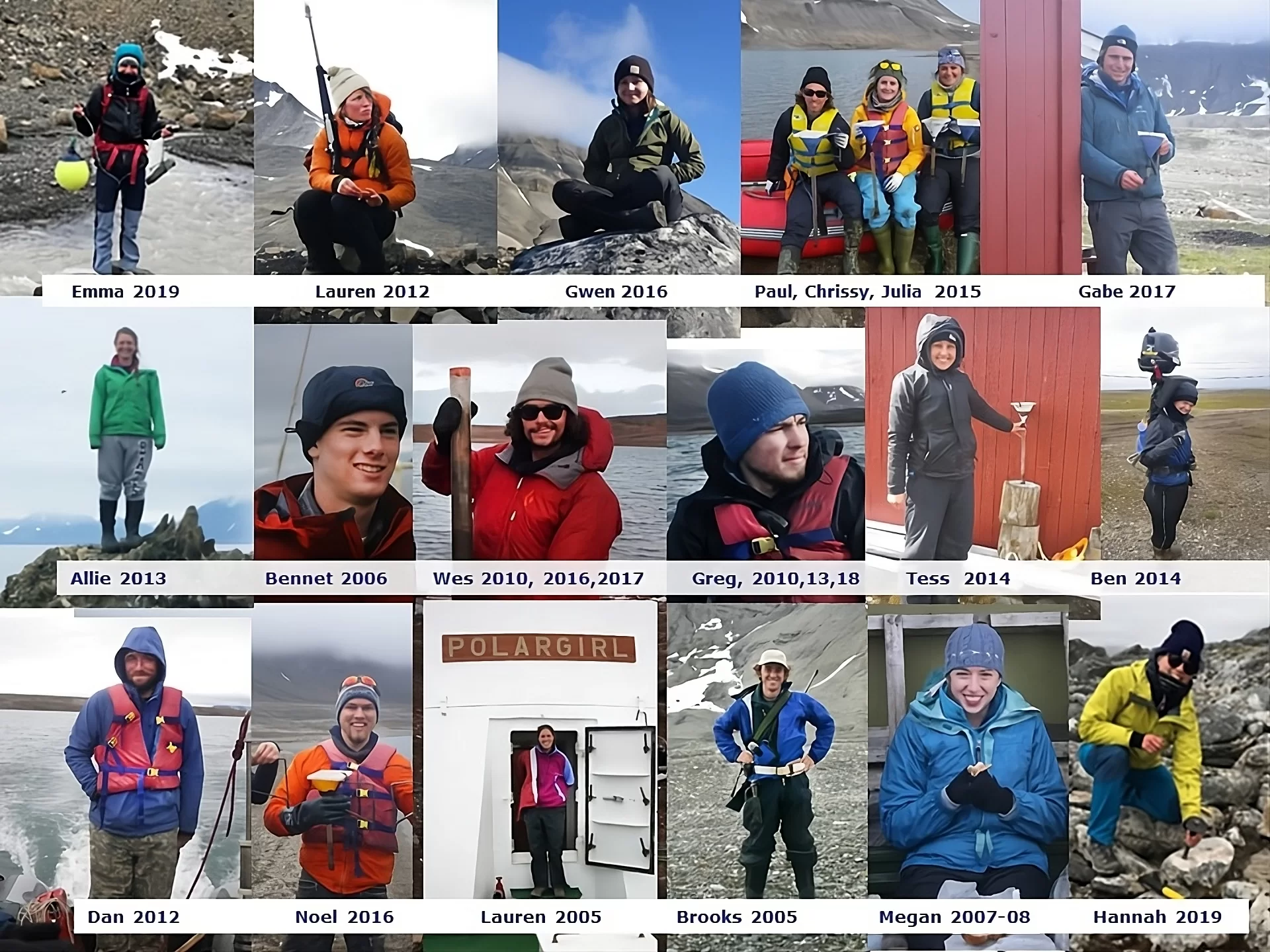
A new paper in Nature identifying an important influence on Arctic weather lists five co-authors, including Professor Emeritus of Geology Mike Retelle.
But ask Retelle about his own contribution, and he’ll point to the long line of talented Bates students who’ve supported his and other researchers’ climate-focused work in Svalbard, Norway, over the last two decades.
“Over the years, about 20 Bates students have gone to Svalbard for summer work or have stayed at the University Centre in Svalbard for a semester,” he says. “Mitchel Soederberg ’25 just returned from doing the winter semester, and Jamie Hollander ’24 was in our program last summer.”

Funded by a National Science Foundation grant, the new research by Retelle and his fellow scientists used paleoclimatic data from the last 2,000 years, powerful computer modeling, and in-the-field research on lake sediments and tree rings to determine that certain types of weather over the last 2,000 years have often been due to a meteorological phenomenon known as “atmospheric blocking.”
Atmospheric blocking is what it sounds like: A large, stable weather pattern that blocks the usual movement of weather systems through an area. And in the Scandinavian Arctic, the researchers found that blocking patterns contribute to weather extremes, specifically periods of warm and very wet weather, which are becoming more frequent as the climate warms.
Retelle, who retired from the Bates faculty in 2022, remains active in his research in Svalbard, a group of islands in the Arctic Ocean. A popular research site, the Svalbard archipelago is located halfway between the Norwegian mainland and the North Pole.

When atmospheric blocking events lead to heavy rainfall, the runoff, among other things, causes sediment particles and high levels of calcium to wash into Linnévatnet, a lake in southwest Svalbard. The coarsest sediments, which were consistently deposited during very heavy rainfall, were linked with atmospheric blocking events.
The sediment record from Linnévatnet shows that this pattern has been consistent for the past 2,000 years. The data also indicate that a long-term decrease in precipitation ended in the mid-1800s, and in recent years, as periods of blocking increased, the area experienced an uptick in extreme weather events.
“As warming continues and sea ice recedes, future Svalbard floods will become more intense during episodes of….blocking,” the paper reports.

Retelle’s contributions to the paper include doing field surveys and gathering sediment cores from the bottom of Linnévatnet, which offer scientists a historical record of environmental changes. This work, he says, wasn’t done alone.
“Wes Farnsworth ’11 was part of the project when we recovered the lake sediment cores described in the paper,” Retelle says. “He’s now with the geology department at the University of Iceland and was a co-author on another paper, published in 2023, supported by the NSF grant.”
In this video, researcher Wes Farnsworth ’11 retrieves a core sample from the lakebed of Linnévatnet, located on the west coast of Svalbard. Since 2012, Mike Retelle, seen wearing the red parka, has deployed such instrumentation, which provides crucial and precise data about the timing of sediment pouring into the lake during increasingly frequent rainstorms.
The work is ongoing. In fact, Retelle was on his way back to Svalbard for more research the day after the paper was published, practically passing Bates student researchers in the air, including Soederberg, an earth and climate sciences major from Bedford, N.H. (The name of the Bates major changed from geology to earth and climate sciences in 2020.)
The Svalbard work has created a real pipeline for Bates students. Hollander, an earth and climate sciences major who graduated in June with honors, is now headed back to Svalbard. “She was just awarded a Fulbright Student grant to study the release of methane, a greenhouse gas, as glaciers retreat,” Retelle says.
Based at UiT–The Arctic University of Norway, Hollander will be affiliated with researchers Dimitri Kalenitchenko and Andrew Hodson (one of Retelle’s longtime collaborators). She will contribute to their exploration of the complex relationship between glacier melt, hydrological controls, and methane emissions. “She’s a rock star,” says Retelle.
As for Retelle, he will be in residence at the University Centre (UNIS) in Svalbard until late September. He is presently contributing lectures and field excursions to a doctoral and postdoc summer school for the Norwegian Academy for Polar Sciences, plus leading his regular summer teaching program for UNIS.
“We got a new grant from the Svalbard Environmental Protection Fund to go back for two years to keep up the hydroclimate monitoring, and I’m helping out in another UNIS glacier course,” he said. “This is my semi-retirement!”



